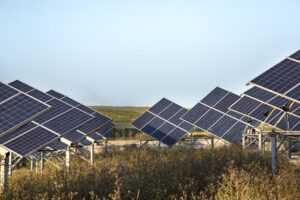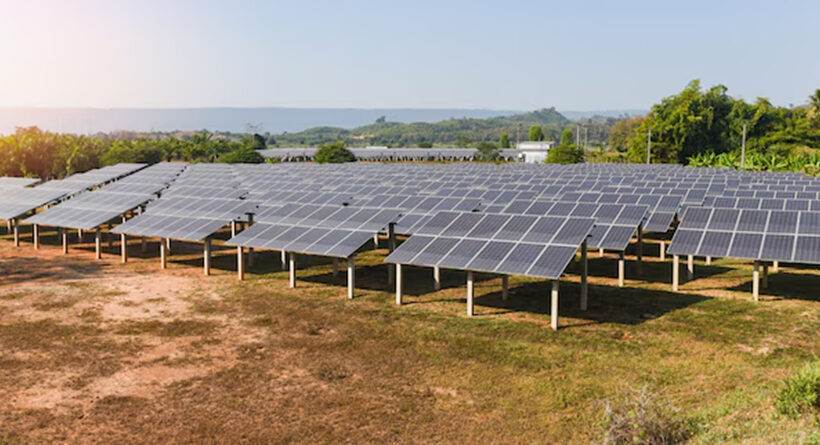Introduction
Located just above the equator, the Philippines is blessed with abundant sunlight, which makes the use of solar energy efficient and feasible. Setting up a solar farm in the Philippines can be a profitable and environmentally impactful investment. With the country’s abundant sunshine, a well-designed solar panel farm has excellent potential and planning carefully is significant.
To make setting up a solar farm in the Philippines a rewarding one for you, both financially and environmentally, we have come up with the ten critical considerations to keep in mind before you launch a solar panel in the Philippines.
10 Critical Factors to Assess Before Developing a Solar Farm
1. Understanding the Solar Farm Minimum Size
The size of your solar farm is a crucial factor to consider before setting up a solar farm. Typically, a commercial solar farm requires at least one hectare of land per megawatt (MW) of capacity. Knowing the solar farm’s minimum size ensures you plan adequately for land acquisition, zoning, and construction.
In the Philippines, available land, proximity to transmission lines, and local land use regulations will also impact the minimum size that you will require to start a successful solar power farm.
2. Evaluating Solar Resources and Sunlight Potential
To evaluate solar energy potential in the Philippines, you can use solar mapping tools and Geographic information systems to assess solar energy potential, considering local weather conditions and geographical features.
However, the amount of solar energy generated can vary by region, coastal areas and elevated locations tend to receive more sunlight than some inland areas.
Conducting a solar resource assessment will help identify how much energy your solar farm can potentially generate and allow you to make informed decisions on panel placement. You can also read our blog on The Current State of Solar Energy & its future in the Philippines.
3. Selecting the Right Location and Land Use
Location is a decisive factor for any solar farm business. In addition to sunlight potential, consider accessibility for maintenance and proximity to transmission lines for connecting to the grid.
The land should ideally be flat and free of significant obstructions, such as trees or buildings, that could cast shadows on solar panels. Moreover, check local land use regulations and ensure you comply with any zoning requirements.
4. Navigating Regulatory Requirements and Permits
To operate a solar farm in the Philippines, secure the necessary permits and licences as these include environmental compliance certificates, land conversion permits, and business permits. The process can be complex, but understanding and following the regulatory steps will help avoid delays.
Consult with professionals who specialise in renewable energy projects to ensure your solar farm meets all requirements.
5. Calculating Project Costs and Financing
Developing a solar farm in the Philippines is a substantial investment. The initial solar panel costs in the Philippines include land acquisition, equipment procurement, installation, and permits.
Additionally, you will have ongoing maintenance and operational costs. Fortunately, there are financing options, such as government incentives, green loans, and partnerships with renewable energy investors, that can help you manage these expenses.
A detailed financial plan is essential for estimating your return on investments (ROI). Besides this, you can also calculate your solar expenses and how much you can save annually by setting up solar farms in the Philippines, from the solar calculator available on our website.
6. Understanding How Community Solar Farms Work
Community solar farms allow multiple households or businesses to share the benefits of a single solar project. If your goal is to set up a community solar farm in the Philippines, you will need to consider the logistics of sharing energy production among multiple users.
This model can increase the accessibility of solar energy, particularly for people who may not have suitable space for individual solar panels. This approach has the potential to generate a steady income through community-based investments.
7. Grid Connection and Infrastructure Availability
Connecting your solar farm to the grid is critical to its success, requiring proper infrastructure such as transformers and transmission lines to connect.
Collaborate with the national grid and utility providers to understand capacity issues, costs associated with connecting, potential upgrades required, and any upgrades that might be available. Grid-connected solar farms tend to enjoy more stable income streams due to selling electricity directly or entering power supply agreements.
8. Exploring How Solar Farms Make Money
Understanding how solar farms generate revenue is integral to business planning. In the Philippines, most solar farms generate their income primarily by selling electricity into the national grid or entering power purchase agreements (PPAs) with private companies.
Feed-in Tariff schemes or renewable energy certificates may also offer income streams. Therefore, establishing a clear revenue model with utility providers to estimate long-term profitability is vital to consider before implementing a solar panel in the Philippines.
9. Maintenance and Operational Considerations
Maintaining your solar farm requires ongoing maintenance for panels, inverters, and equipment in the Philippines’ humid climate can add extra wear and tear.
Therefore, being prepared for weather-related issues such as storms or typhoons requires building an effective maintenance plan with preventive and corrective plans that keep solar panels efficient while decreasing downtime, which ultimately affects revenue growth.
10. Environmental Impact and Sustainability
A solar farm in the Philippines has the power to significantly lower carbon emissions, but environmental considerations go beyond energy production.
Thus before setting up a solar farm in the Philippines you must take note of how your project affects local ecosystems and communities while minimizing land disruption, protecting natural habitats, and engaging local communities which are all key steps toward meeting sustainable development goals.
Conclusion
Building a solar farm in the Philippines is an exciting venture that can benefit both the environment and your finances simultaneously.
By understanding the critical factors such as solar farm minimum size, location, cost, grid connection, and others, you can develop a comprehensive plan to launch and sustain a successful solar panel farm.
Solar farms are more than just energy projects, they are the shields that are safeguarding the Filipinos from sky-high electricity costs and contributing to a cleaner planet. With our professional assistance and detailed explanations through our blogs, you can choose solar panels and solutions that fit in your budget and satisfy your needs.
So, contact us and get the best panel for your needs. To call, dial +639176310032 or write to us directly at wecare@nativtechniks.com
Read our other blogs
How Solar Panels Are Boosting Disaster Resilience in the Philippines





Leave a Reply